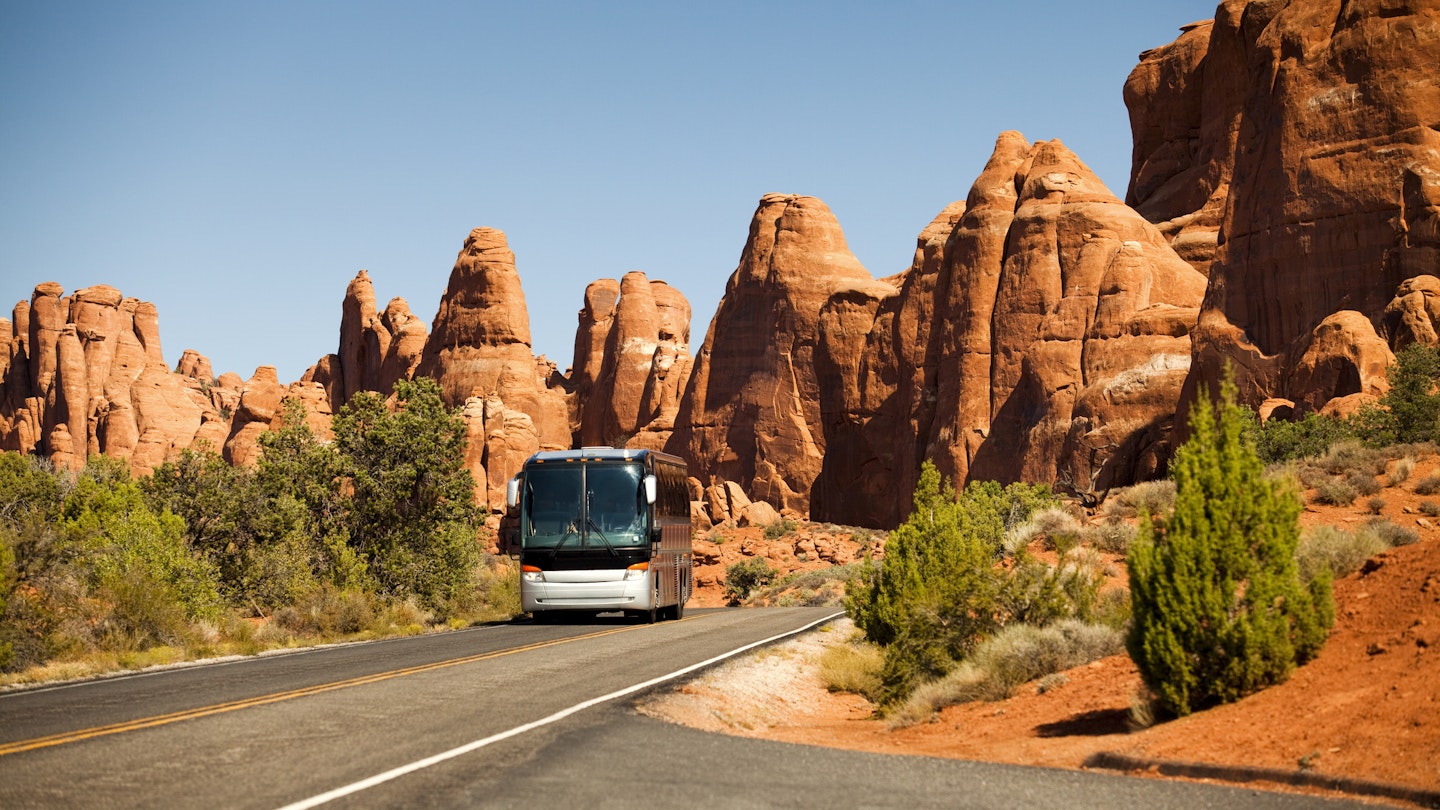Table of Contents

Utah is an expansive state, covering nearly 85,000 sq miles, surpassing Great Britain in size. As a result, considerable distances exist to traverse its stunning landscapes. While traveling within the state, personal vehicles or RVs are the most convenient options; however, public buses, commuter trains, and light rail services are available in the three largest cities: Salt Lake City, Ogden, and Provo.
As the thirteenth largest state in the United States, Utah offers an abundance of attractions and numerous sites to explore. It also ranks third in the nation for the number of national parks, collectively referred to as The Mighty Five. Known globally for its vibrant red rock canyons, thrilling off-roading, scenic byways, and what locals often refer to as the “greatest snow on Earth,” Utah is a premier destination.
Consequently, driving is the preferred method of transportation. Nonetheless, alternative options exist, particularly along the bustling Wasatch Front, which encompasses the state’s three main urban centers. Below is essential information to consider before embarking on your journey to Utah.

Driving is recommended for access to everywhere
Given that most of Utah is accessible via paved and well-maintained roads, utilizing a car, camper, or motorcycle is the most convenient and fulfilling method to navigate the highways and byways. Having a personal vehicle affords the maximum flexibility to discover national parks, traverse scenic routes, and engage in cultural and recreational activities at your own pace. Rental cars are readily available at major airports and urban centers, and GPS navigation systems are highly reliable.
However, numerous travelers opt for 4WD vehicles to reach the more secluded areas of breathtaking Southern Utah, although many of these locations can often be accessed with standard cars or mid-clearance crossovers. If you intend to visit Utah’s ski resorts during the winter, please note that highway patrol regulations mandate all-wheel drives or chains to access the slopes under heavy snowfall conditions.

My preference for cars as the primary means of travel in Utah stems from my extensive experience exploring nearly every corner of the state over the past two decades. Without a vehicle, many of Utah’s remarkable features would remain undiscovered. Although tour buses can reach some areas, they, along with public transit, do not provide access to many of the state’s most notable outdoor attractions.
For those visiting for the first time, newcomers to Utah may quickly observe that drivers here often neglect the practice of keeping to the right to allow faster vehicles to pass on the left. This might be frustrating; however, I have yet to see this behavior improve in the 20 years I’ve resided here!
Tip for electric car drivers: Utah boasts hundreds of charging stations, including locations in national parks such as Zion. However, outside the Wasatch Front, charging stations become more limited. Therefore, when exploring remote regions, it is advisable to plan charging stops in advance.

Public transportation is most feasible in the state’s three major cities
If your visit to Utah is primarily focused on the urban centers of Salt Lake City, Ogden, or Provo (the prominent cities within the Wasatch Front corridor), utilizing public transportation may be a practical approach for navigating the area. The quality of public transport here is significantly better than in many other states. Even skiers can easily access resorts thanks to seasonal bus services operating from Salt Lake City during the winter months.
Throughout the Wasatch Front, users can rely on UTA Buses, FrontRunner commuter trains, and TRAX Light Rail, which operate every 15 to 20 minutes during the day (and hourly during the night). It is important to note that, as with most public transport systems, services are less frequent during off-peak times; therefore, this can potentially double or triple your commute duration if traveling during less busy times of the day.

How to get around in Utah without a car
Greyhound services connect long-distance destinations from cities including Salt Lake City, Provo, Ogden, Green River, Parowan, and St. George. Additionally, Amtrak‘s Zephyr train makes stops in Salt Lake, Provo, and Green River on its route from Chicago to San Francisco, while the Rocky Mountaineer “Rockies To The Red Rocks” train connects Moab and Denver. Additionally, air travel facilitates connections from Salt Lake City to other metropolitan areas and tourist destinations, such as Moab, accessible via the small Canyonlands airport.
Cycling is a viable option in urban regions, and public buses are equipped with bike racks to facilitate commuting between hubs. Although challenging due to elevation changes, it is feasible to cycle along the north-south corridor of the Wasatch Front, following Interstate-15, with certain restrictions around Salt Lake City. Moreover, cycle touring is available in numerous national parks, and off-road cycling is a favored method to explore adventure regions such as Moab.
Tips for ridesharing in Utah: In addition to local public transportation options, ridesharing has gained popularity for traversing the Wasatch Front and various ski resorts in the area. Lyft tends to be the more preferred and economically favorable rideshare option.

There are good accessible facilities throughout Utah
Utah effectively caters to individuals with disabilities, providing accessible facilities statewide. Disabled parking is available at restaurants, shopping centers, tourist attractions, and national parks, ensuring ease of access. Moreover, all forms of public transportation are equipped with wheelchair accessibility and assistance. For additional resources tailored to travelers with disabilities, Visit Utah offers valuable information.
Transport Passes for major cities
The Utah Transit Authority offers a range of transport passes for use within Salt Lake City and surrounding Wasatch Front cities, including options for day passes and monthly passes. Additionally, payments can be made using a Farepay card or via the Transit app. A fare-free zone is also available for transport around central Salt Lake City, applicable to both buses and TRAX trains.
This article was first published on January 14, 2022, and updated on October 11, 2024.





